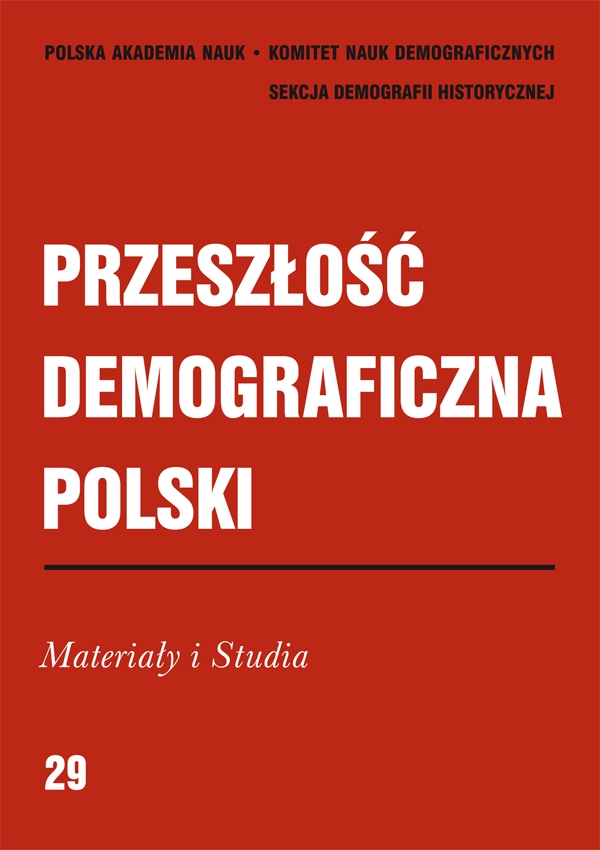Rodzina i gospodarstwo chłopskie w ziemi wieluńskiej i powiecie ostrzeszowskim w końcu XVIII wieku
Słowa kluczowe:
demografia, rodzina, chłopi, spisy ludności, ziemia wieluńska, powiat ostrzeszowski, wiek 18.Abstrakt
Peasant family and farm in the Wieluń region and in the district of Ostrzeszów at the end of the 18th century
The author describes the size and structure of peasant farms depending on the peasant’s socio-economic status and the type of feudal ownership. The research comprised nine Roman Catholic parishes in the Sieradz province in the Wieluń region and in the district of Ostrzeszów, where local clergy conducted censuses in 1790–1792.
On wealthier farms, cmetho and semi-cmetho, the rate of extended and complex families was 22.4 and 29.0, respectively, and on poorer farms — hortulanus, cottager and inquilinus — the rate was 19.0, 13.1, 14.6, respectively. The same relation applied in the case of the number of people on the farm; there were more people on wealthier farms than on poorer ones, which was related to the demand for additional workforce in larger farms, with greater obligations to the estate.
The size and structure of the peasant farm was also shaped by the age of the peasant on wealthier farms and by the owner of the village the King, the gentry or the Church, so on the one hand — by the ability to fulfill the obligations to village owners, and on the other, by the size of the obligations. Thus, the farms needed to employ appropriately more or less workforce.

